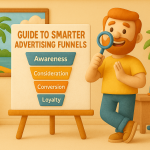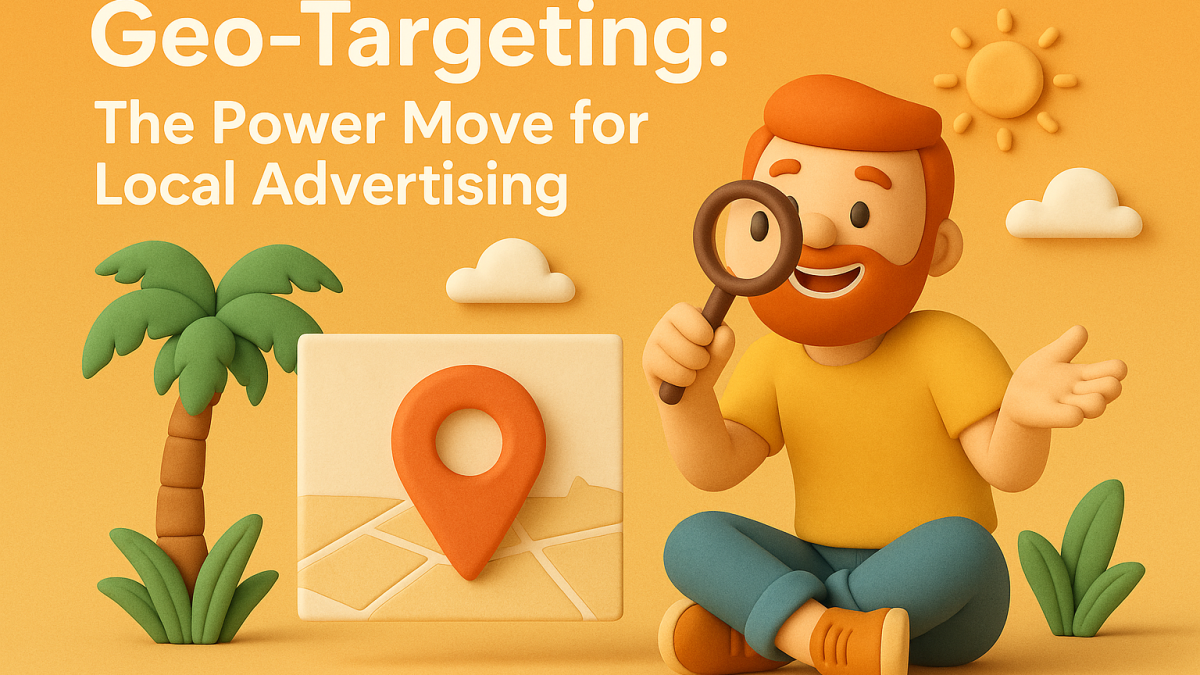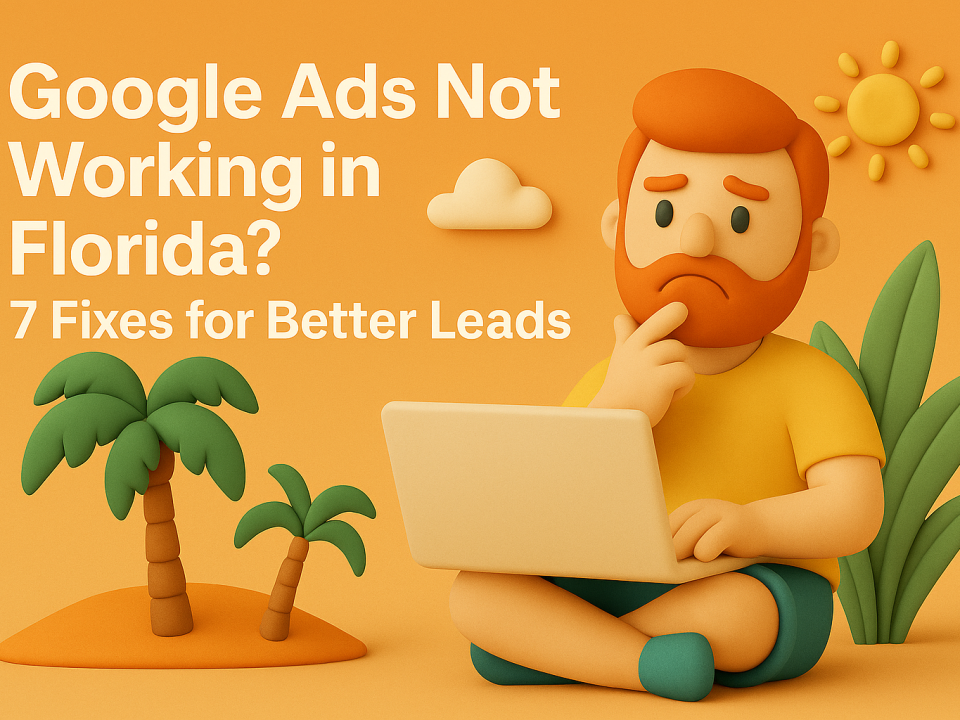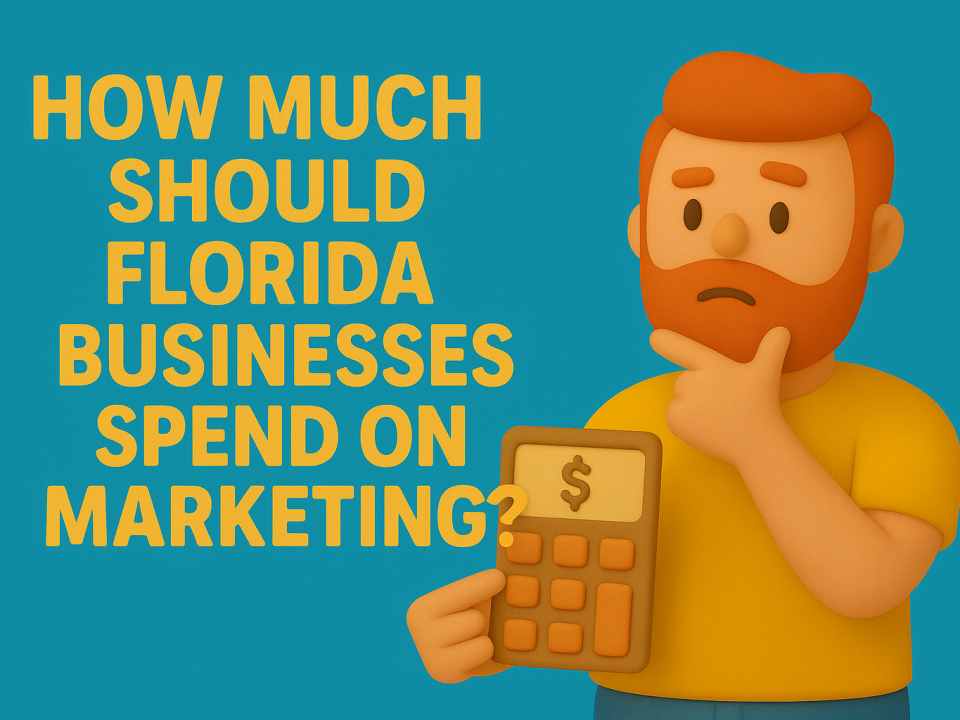
How South Florida Businesses Win with YouTube Ads
August 13, 2025
South Florida’s Guide to Smarter Digital Ad Funnels
August 21, 2025🚨 Geo-Targeting: The Power Move for Local Advertising
In digital advertising, the difference between blending in and breaking through often comes down to precision. Businesses chasing growth can’t rely on blanket campaigns anymore. Geo-targeted advertising makes it possible to cut through the noise and connect with people in the exact place and moment they’re ready to act.
For brands wanting to refine their effective marketing strategies , geo-targeting is one of the few levers that can reduce wasted ad spend while lifting conversions. Instead of the ol’ “spray and pray” method, it’s smart, surgical, and data-backed. Giving your business better insights on what locations actually drive sales. Why spend $ on Pompano, if Dania Beach is driving 90% of your revenue?
The goal for this post is to break-down how geo-targeting works, why it matters to you now, and the best practices every business should know before they launch their next campaign.
TL;DR: Geo-Targeted Advertising in 2025 📍
-
What it is: Delivering ads based on a user’s location for higher relevance (City, zip code, radius)
-
Why it matters: Boosts ROI, cuts wasted spend, and strengthens local connections.
-
Where it works: Search, social media, programmatic display, and CTV.
-
How to win: Pair geo-targeting with strategic creative and offers — using local insights, creative testing, and ongoing optimization.
Want to skip the 3 minute (highly valuable) read & get to it? 👉 Book your free strategy session now
📍 What Geo-Targeting Really Means
Geo-targeting is the practice of delivering ads based on your desired geographic location. This can be, country, city, zip code, or even a tight radius around a location. The strength isn’t just the data you’ll receive, but how it ties back to intent. A campaign built for one neighborhood often outperforms the same message shown across an entire metro. Why?
Why it matters:
-
🎯 Relevance: Ads mirror the local culture, priorities, and problems.
-
💰 Efficiency: Budget goes to prospects with the highest chance of converting.
-
⚡ Advantage: Competitors using broad strokes can’t keep up.
Here’s an example: a law firm might run mobile search ads only within a 10-mile radius of its office because they only take appointments in office, while an HVAC company may geo-fence competitor showrooms to capture shoppers at the decision stage. Sneaky but effective!
📊 How Geo-Targeting Plays Across Platforms
The biggest mistake advertisers make is assuming geo-targeting belongs only in Google Ads. In reality, every major channel now bakes it into their systems, this is good news for you!
-
Search: Google and Bing let advertisers refine by city, zip, or custom radius. High-intent “near me” searches dominate mobile. Think “food near me” when you’re hungry.
-
Social Media: Facebook, Instagram, TikTok allow geo-layering on top of interest and demographic filters.
-
Programmatic: Real-time bidding matches impressions to device-level location.
-
Connected TV (CTV): Lets brands run local video campaigns across streaming platforms by DMA.
👉 Pro Tip: Don’t treat geo-targeting as a setting. Pair it with audience segmentation (interests, behaviors, or purchase data) for messaging that converts at scale. This will give your campaigns a competitive advantage.
🎨 Creative That Speaks the Local Language
Even the best targeting flops if the creative feels off. Local ads resonate best when they reflect the community they serve so, consider some creative cues like the below,
-
Use local landmarks or visual cues in imagery.
-
Call out area-specific offers.
-
Address unique pain points (e.g., storm prep for contractors).
-
Share local testimonials for trust.
Example: a chiropractor running a campaign called “Relief for Busy Professionals” that shows imagery of downtown office workers and highlights same-day appointments.
📈 How to Measure What Works
Running geo-targeted campaigns without measurement is like driving blindfolded. Businesses should track the following,
-
CTR and engagement by location
-
Conversion rate and CPA by region
-
Offline impact like store visits or calls
Advanced techniques:
-
Geo-fencing around competitor sites or events
-
Multi-touch attribution to see how location-driven ads fit the funnel
-
Testing radius sizes, offers, and creatives for optimization
👉 Pro Tip: Tie campaign data to your CRM insights for a clear line between ad spend and revenue.
✅ Bottom Line
Local businesses running ads shouldn’t treat geo-targeting like a side tactic. It’s a foundation for any business serious about efficient growth in 2025. Done right, it blends precision with personalization, making every dollar work harder and every message hit closer to home.
If your CPL/CPA is high or if your ad aren’t driving ther results your business needs, your current campaigns might be casting too wide a net, it might be time to rethink. Our team specializes in geo-targeted digital campaigns that turn wasted impressions into measurable ROI. Let’s talk about what that looks like for your business.
👉 Book your free strategy session now
J. Oliver Advertising
📈 Scaling Smarter Starts Here!
📸 Instagram
⭐️ 5 Star Reviews




